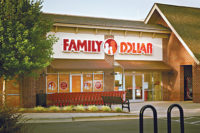Although retailers have historically used the “multichannel” approach to reach consumers, the rapidly growing focus on the consumer and integrated, customer-focused technology has paved the way for a “total retail” experience, according to New York-based PwC’s report “Achieving Total Retail: Consumer Expectations Driving the Next Retail Business Model.” Based on a survey of more than 15,000 online shoppers globally, the study reveals eight consumer expectations that call upon retailers to create a total retail business model transformation.
“Consumers now view multichannel shopping as a given, and the costs and complexities of managing a multichannel model are too great and offer too few rewards to benefit the customer experience,” said Steven Barr, PwC’s U.S. retail and consumer practice leader, in a statement. “Today’s nonstop shoppers have taken things into their own hands, becoming more tech-savvy than retailers. Consumers have the tools at their fingertips to immerse themselves into the retail brand. Our report finds that consumers have strict expectations that challenge today’s shopping experience and, in response, retailers should embrace what we at PwC are calling ‘total retail.’”
PwC outlines eight key consumer expectations and provides business implications for retailers to help achieve the total retail model:
•A compelling brand story that promises a distinctive experience: Retailers should better establish a strong brand promise that solidifies a core of loyal customers. A high percentage of survey respondents said they are attracted to brands that tell a story in an engaging manner. Seventy-nine percent of U.S. shoppers said they shop at their favorite retailers/brands because they trust the brand.
• Customized offers based on totally protected, personal preferences and information: Big data and predictive analytics will help retailers use customer data to increase marketing and sales effectiveness through customizing digital coupons, exclusive content and social media promotions, among others. However, 37 percent of U.S. shoppers said they do not use their smartphone for shopping because they are worried about security. Retailers should better safeguard data by either building their capabilities step-by-step or adding proper capabilities through acquisitions.
• An enhanced and consistent experience across all devices: Among U.S. survey respondents who do not use their mobile phones or smartphones for shopping, 32 percent said they do not own mobile/smartphones, and 33 percent said device screens are too small for easy shopping. However, as screen sizes grow and more consumers obtain newer mobile devices, mobile shopping will likely accelerate. To prepare for this growth, a total retailer will need to have the technical ability to provide one seamless experience via PCs, tablets, mobile phones, apps and Web browsers.
• Transparency, real-time views into a retailer’s inventory: When asked which in-store technologies would make for a better shopping experience, 45 percent of U.S. survey respondents chose the ability to check other stores’ or online stock quickly. Consumers are looking for actionable inventory information from retailers about how products are tracked, warehoused and distributed. This will push retailers to upgrade technology for their supply chains.
• Favorite retailers are everywhere: When asked what they would do if their favorite retailer shut down their local store, 53 percent of survey respondents noted they would locate the next nearest physical store, and 40 percent said they would increase ordering from the retailer’s website. Shoppers today presume retailers are everywhere and always connected like themselves, and retailers need to look at store portfolio management more strategically.
• To maximize the value of mobile shopping, both store apps and mobile sites must improve: PwC’s survey finds that shoppers do not have a strong preference regarding using an app or browser for mobile shopping. When asked how often they use an app and mobile browser for shopping, respondents noted 22 percent and 28 percent weekly, respectively, with mobile browser shopping faring a bit higher because of convenience (53 percent prefer mobile browsers because of convenience). Retailers should ensure their mobile sites are optimized and also ramp up their apps to improve the user experience.
• Two-way social media engagement: Enthusiasm for social media by retailers and brands is driving consumers to engage, comment and even affect change. When asked what attracted them to a particular brand’s social media site, 61 percent of U.S. respondents noted attractive deals and promotions, 38 percent noted new product offerings, and 28 percent said because they shop with the retailer. Retailers should, in return, listen to customers on social media and transform the online commentary into actionable data for new ideas and improved experience.
• Brands act like retailers, and we’ll treat them that way: The gray area of overlap is growing between brands and retailers, and 44 percent of U.S. survey respondents noted that lower price is the main reason they buy from a brand’s website. Retailers today are partnering with brands and manufacturers to share consumer insights and collaborate on category management to drive more success for both.
For more information and to download an electronic copy of “Achieving Total Retail: Consumer Expectations Driving the Next Retail Business Model,” visit http://pwc.to/ttlretl.



